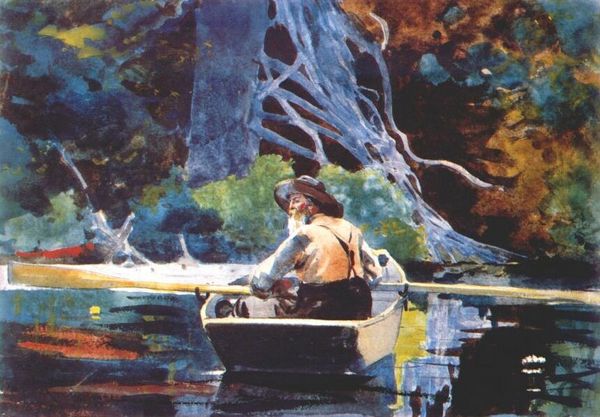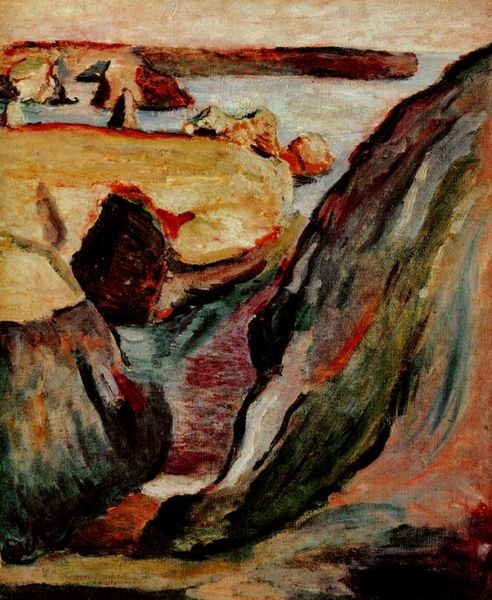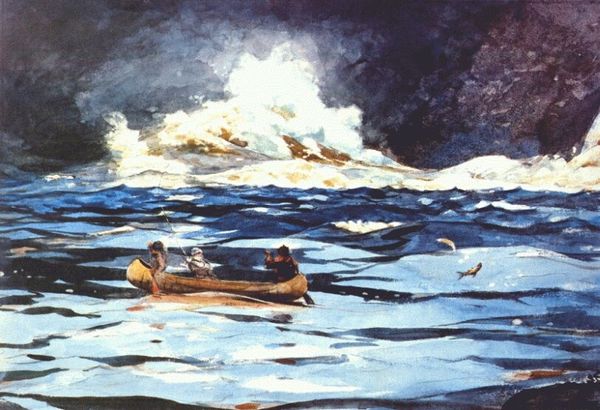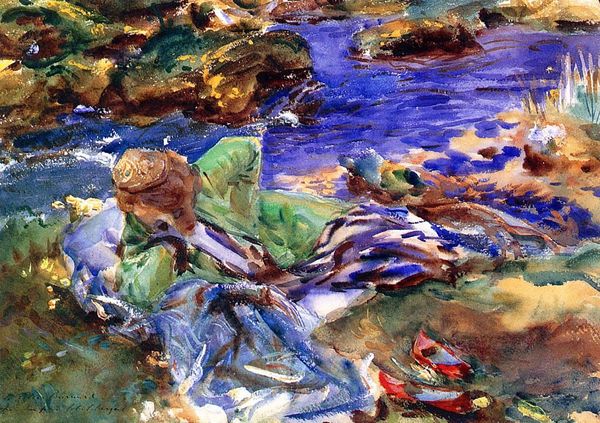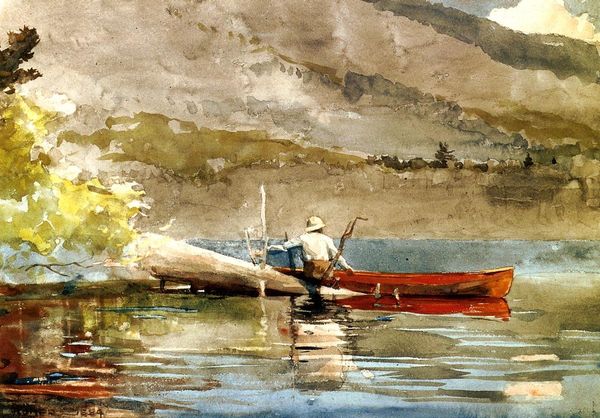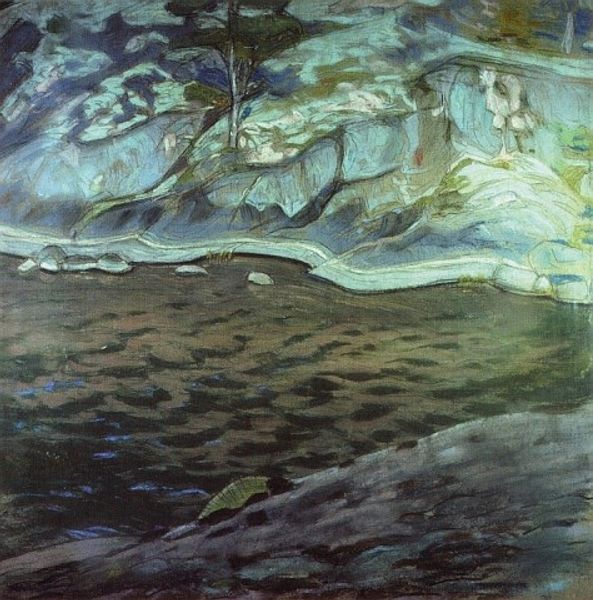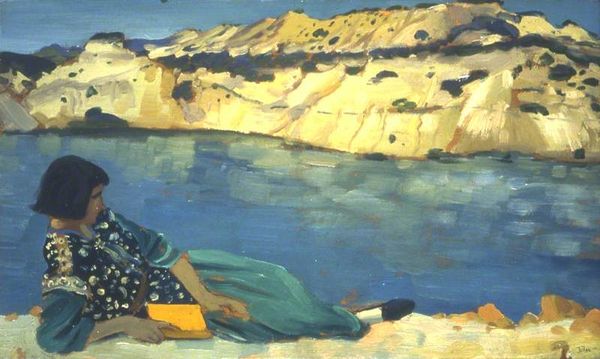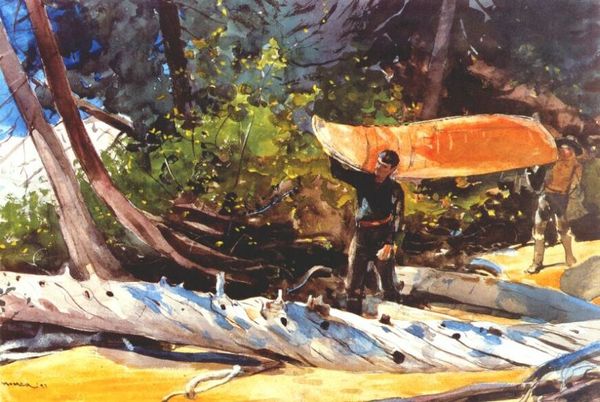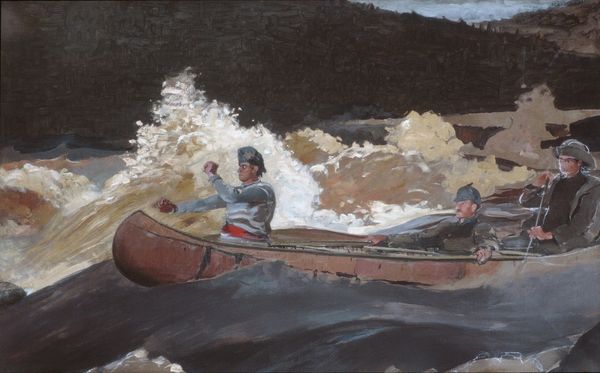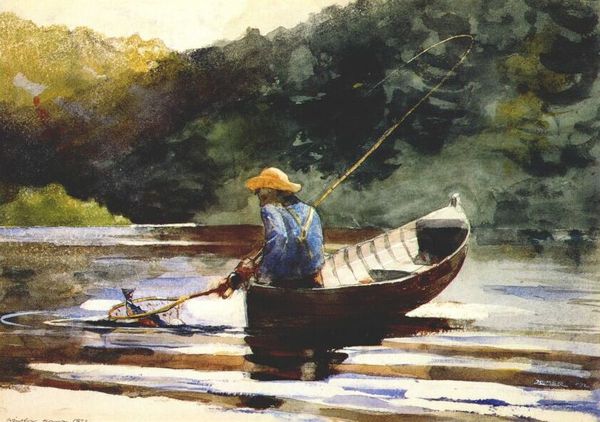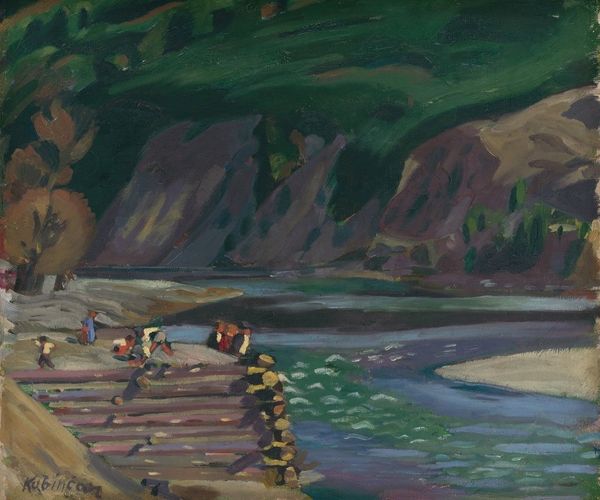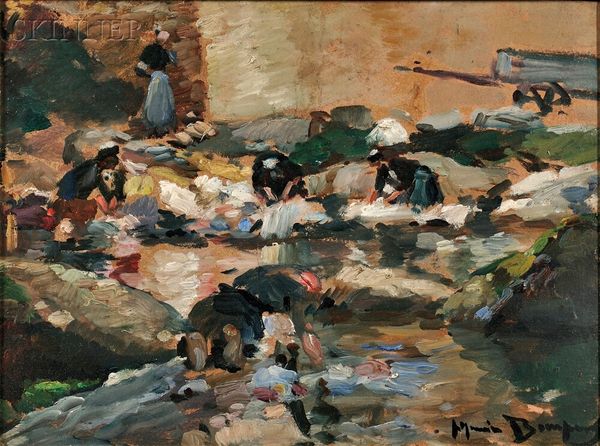
Dimensions: 55.4 x 35.5 cm
Copyright: Public domain
Curator: Winslow Homer’s watercolor "Shooting the Rapids," dating to 1902 and held at the Brooklyn Museum, really captures one’s attention immediately. The visual dynamism of the rough water is arresting. Editor: Indeed. My first impression is of raw energy. The churning water dominates, with a palpable sense of both peril and excitement suggested in this uncontrolled aquatic rush. Curator: Homer, especially during his time painting in Maine and Canada, became fascinated with portraying man's relationship with nature. Here, we see a stark visual construction in his study of water in conflict, rendered visible through gradations in value. Note the compositional interplay between the solid, dark shapes of the canoeists against the swirling white and grey of the rapids. Editor: From a historical perspective, such imagery also participated in a larger narrative. Consider this through the context of the late 19th and early 20th centuries, during which wilderness travel and adventure became increasingly fashionable and celebrated by those from a white American background, which played a significant role in how national identity was visualized. We should consider the problematic narrative implicit in Homer’s approach. Curator: Your reading brings forth pertinent social dimensions, particularly regarding ideas of outdoor experience and cultural appropriation in representations of figures in the landscape. Nevertheless, even separated from social concerns, it remains a captivating study in form, a testament to Homer's remarkable grasp of how to depict movement through static pigment. Observe his distinctive brushwork. The loose, fluid strokes effectively mimic the chaotic nature of the rapids, emphasizing not only visual realism, but the feeling of the chaotic rapids too. Editor: I wonder how differently this image would be received or perceived if it foregrounded, centered, or considered Native perspectives. I imagine the story changes if the gaze of the composition shifts its point of view. What is considered visually important within the aesthetic composition changes along with it, along with which subjects have political agency in the story told within the imagery. Curator: Yes, by drawing awareness to those representational issues of visibility, the power relations that produce images like this one become much more apparent. I’m not sure if his choices can entirely erase that tension, but returning to the materiality for a moment, the immediacy of the watercolor medium surely lends itself to that vibrant, visceral effect on the viewer. It brings the dynamism to life with gestural and visual energy, wouldn't you agree? Editor: A powerful study in contrasts; thank you. Curator: A fruitful discussion; thank you as well.
Comments
No comments
Be the first to comment and join the conversation on the ultimate creative platform.
